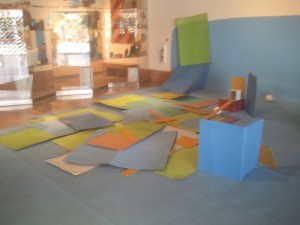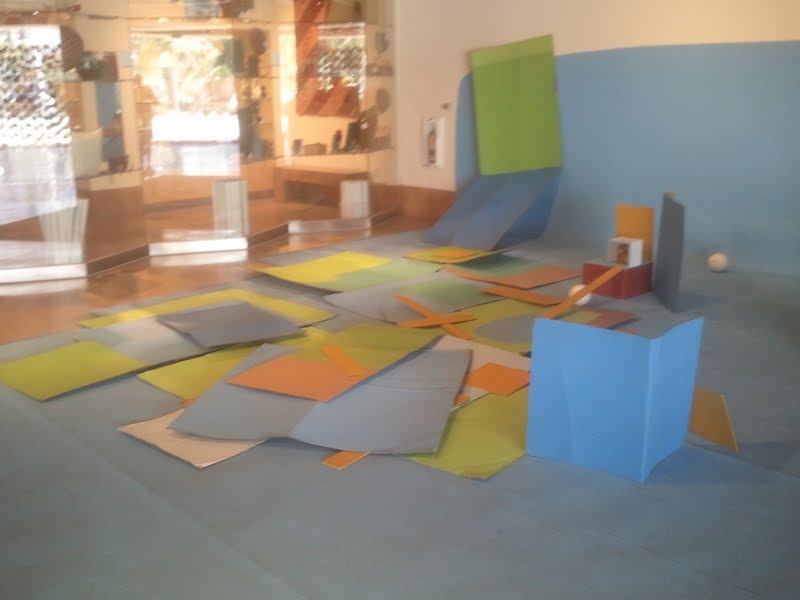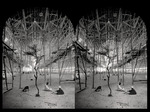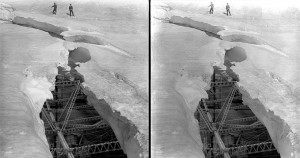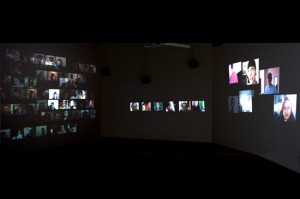Posts from the ‘projects’ Category
 Scalar @ ANVC (Alliance for Networking and Visual Culture at USC):
Scalar @ ANVC (Alliance for Networking and Visual Culture at USC):
http://scalar.usc.edu/learning_scalar/webinar-schedule/
Join us for upcoming webinars.
To follow up on our recent Beta release, the Scalar development team will be offering a series of free online webinars this spring and summer.
Our “Introduction to Scalar” webinars will cover basic features of the platform: a review of existing Scalar books and a hands-on introduction to paths, tags, annotations and importing media. Our “Intermediate Scalar” webinars will delve into more advanced topics including the effective use of visualizations, annotating with media and a primer on customizing appearances in Scalar.
Our summer schedule includes the remaining dates:
Intermediate Scalar: July 31, 4-6pm (PST)
Our fall schedule includes six dates:
Introduction to Scalar: August 21, 10am-12pm (PST)
Intermediate Scalar: September 11, 10am-12pm (PST)
Introduction to Scalar: September 25, 4pm-6pm (PST)
Intermediate Scalar: October 9, 4pm-6pm (PST)
Introduction to Scalar: October 30, 10am-12pm (PST)
Intermediate Scalar: November 20, 10am-12pm (PST)
Spaces are limited, so sign up now!
To register for the online webinars, please visit our registration page.
Response by Rochelle Gold
Every September, the new MLA Job Information List (JIL) offers a snapshot of the state of the field for literary scholars. Roopika Risam’s recent blog post “Where Have All the DH Jobs Gone?” points out that in spite of the hype around digital humanities as the next big thing, digital humanities job opportunities are dwindling. After reading through the JIL, Risam concludes that while a number of job postings, including 17 literature positions, call for digital humanities as a secondary area of expertise, very few postings seem to look for digital humanities as a primary research field. As a result, she argues that “the explicitly DH job is perhaps the most endangered species on the JIL.” To her credit, Risam specifies throughout her blog post that her results are necessarily tentative as job postings are continuously added to the MLA job list throughout the fall. Nonetheless, it is hard to fully understand to what extent Risam’s point about the digital humanities becoming “endangered” makes sense without more context of the humanities job market as a whole. We especially need to know how the number of digital humanities jobs compares to other subfields. I accessed the job list several weeks after Risam to see if her conclusions hold. As Risam herself points out, the JIL can be unwieldy as different search terms yield different results. I will give just a few partial yet suggestive examples. The search terms “Victorian” and “19th century” yielded nine and 11 results respectively. On the other hand, “digital media” and “digital humanities” generated 27 and 32 results. My unscientific tinkering on the JIL points to the extremely harsh realities of the job market overall. While the digital humanities job pool may be shrinking, this seems to reflect the broader trend of the disappearance of jobs in literature and the humanities. Comparatively, digital humanists are probably still faring a little better than the rest, but, of course, that is not saying much at all.
Read Risam’s original post here: http://roopikarisam.com/2013/09/15/where-have-all-the-dh-jobs-gone/
The Politics of DH Professionalization
While the digital sphere has often been understood as a disembodied site of engagement, scholars within DH are increasingly challenging the field to examine its own universalizing tendencies that privilege the white, male producer. As Moya Bailey suggests[i], the increasing visibility of the field calls for an increasing reflexiveness about its own politics: “The move ‘from margin to center’ offers the opportunity to engage new sets of theoretical questions that expose implicit assumptions about what and who counts in digital humanities as well as exposes structural limitations that are the inevitable result of an unexamined identity politics of whiteness, masculinity, and ablebodiness.” The question of “what and who counts” as DH scholarship includes an inherent ability bias, as well as a reclamation of masculinities often labeled “geek” or “nerd.”
As a self-proclaimed “big-tent” field, DH proposes an engaging model of scholarship that embraces interdisciplinary, collaborative approaches that challenge the field and period-specific approaches of many traditional humanities departments. But are those claims valid if the field isn’t aware of its own politics of privileging certain types of users and scholarship? Can we read certain texts, such as the DH Manifesto, as endorsing certain modes of engagement while excluding others? What are the challenges to making the field more engaged with its own biases? What are the possibilities of addressing these politics before the borders of the field become solidified?
The stakes of such questions become apparent with even a quick reading of the last two MLA JIL. While Roopika Risam laments the drop in DH jobs this year, the wide array of posts seeking DH skills as either a primary or secondary specialty suggest the continued appeal of the field. Given the discussion of the possible politics of the field, what does it mean to market yourself as a DH scholar? Even more importantly, what is at stake for young scholars, particularly job seekers, to offer alternative forms of DH scholarship? What would those forms look like and what do they offer that is currently missing? Are there institutional politics that determine the types of DH scholarship or skills privileged? Are there already important reparative politics within DH that need to be recognized? Does the skill bias within the field limit the types of scholars and scholarship possible within DH? Is it possible to be both a DH scholar and a cultural/historical/literary critic and what are the sites of enrichment and tension between these practices? How do you understand your own position within the field as a young scholar and how do these questions emerge in your own research? Are these important questions to consider or is there another, similarly important agenda that DH is advancing?
[i] Bailey, Moya Z. “All the Digital Humanists are White, All the Nerds Are Men, but Some of Us Are Brave.” Journal of Digital Humanities 1: 1 (Winter 2011) n.p. Web.
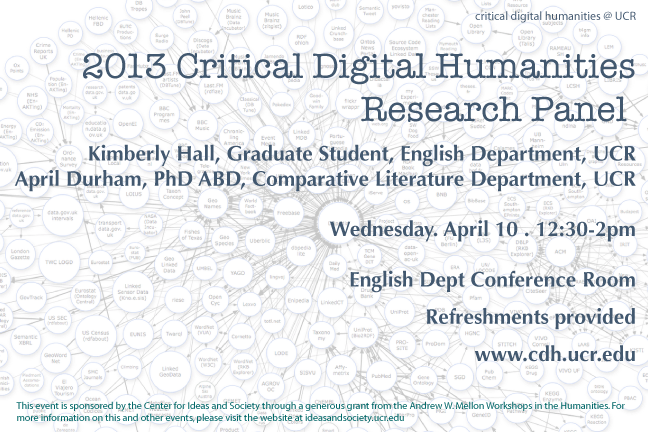 The Critical Digital Humanities presents a CDH research panel with presentations by April Durham and Kimberly Hall. They will present drafts of recent research in digital humanities for discussion and comment.
The Critical Digital Humanities presents a CDH research panel with presentations by April Durham and Kimberly Hall. They will present drafts of recent research in digital humanities for discussion and comment.
Wednesday . April 10 . 12:30 – 2
English Department Conference Room
Refreshments will be served.
Sound Art and the Transborder Digital Memorial: Luz María Sánchez’ “2487” at the Riverside Art Museum
September 19th, 2012
Carolyn Schutten
 In conjunction with the Riverside Art Museum’s exhibition You Are Breathing in It: Alternative Art Practices (YABII), Luz María Sánchez’ 2487, a stereo installation from an 8-channel sound piece, is currently on exhibit in the RAM Alcove Hallway. The sound art installation was curated by Carolyn Schutten, a PhD student in public history from UCR, who took part in the Riverside Art Museum Student Curatorial Council (RAMSCC) pilot program.
In conjunction with the Riverside Art Museum’s exhibition You Are Breathing in It: Alternative Art Practices (YABII), Luz María Sánchez’ 2487, a stereo installation from an 8-channel sound piece, is currently on exhibit in the RAM Alcove Hallway. The sound art installation was curated by Carolyn Schutten, a PhD student in public history from UCR, who took part in the Riverside Art Museum Student Curatorial Council (RAMSCC) pilot program.
2487 speaks the names of the two thousand four hundred eighty seven people who died crossing the U.S./Mexico border . The work employs digital technology and sound as a means for transborder memorialization and protest, imposing the absence of those lost into the public sphere. Sánchez’ immersive sound environment remaps social history as the names of the deceased fly across the border through soundscape and digital media. Drawing from data acquired from activist websites, Sánchez created a sound map of names which she recorded digitally. Her final score, along with the database, has been exhibited widely but lives permanently on the world wide web, in commemoration and quiet protest. Sánchez’ work connects the digital and geographic landscape to the listener’s body, gaining entry through sound and transcending political and physical barriers.
Curator Carolyn Schutten will speak about 2487 and the curatorial process, along with the other RAMSCC students, during a panel discussion on September 21 at 6:00 pm. To RSVP please call 951-684-7111 or e-mail Exhibit Liaison Kathryn Poindexter at: ramexhibitions@riversideartmuseum.org.
2487 will be on exhibit from August 9 – September 26, 2012 in the Riverside Art Museum Alcove Hall. YABII will close on September 22, 2012.
For more information on Sánchez sound project, visit: www.diaspora2487.org
Luz María Sánchez’ 2487 was originally commissioned by Artpace San Antonio as part of the International Artist-in-Residence program New Works: 06.2, curated by Yuko Hasegawa, Chief Curator, Museum of Contemporary Art, Tokyo, Japan.
April Durham . 17 August 2012
Long Beach is about 20 minutes southwest of the crumbly LA neighborhood where I am spending a sticky-baked summer. I am too tired to drive and Pam prefers to pilot anyway. It’s already needle hot when we leave at 10:23 am. The 110 to the 5 to the 60 to the 710. Aquarium exit to Broadway to Alamitos. The parking lot is mostly empty and (finally) a sea breeze teases us toward the door. The space is so professional, so institutionally proper, with excellent air conditioning, gleaming floors, and very quietly polite security guards. The museum avoids the obvious tropes of Latino-ism, tropical frescoes, colorful tile, dense installation. Instead, minimal institutional space sanctions resistance, creating a strange, almost discomfiting celebration the ways in which its constituency creatively reflects on its experience of the world: a globalized, not-particularly-supportive, often-exploitative world.
Why interactivity? The term implies, these days, a high level of technological
interface, a mediating of the “natural” world by the tools of the cyber terrain. But there are only two pieces with an overtly technological structure: Deep Thought V.2, by Dream Addictive, brings to mind boardwalk fortune telling machines, where touching bolt-like “sensors” connect the traveller to a machine that renders thoughts as biofeedback, eventually spitting out a slip of paper with a Spanish interpretation of the imagination. The other involves sitting inside a little oval hut made from egg cartons and waving hands in front of sensors that emit the sounds of the Tijuana streets. Neither of these pieces functions with the slick, fault-proof necessity of the digital interface though. The sense is that they repeat where they should progress or they reset because the physical touch is too tenuous, issuing faults or making frailty and apparatic vulnerability transparent to that of the “natural” human. Fear of too much interface drives the interaction with these works more than a streamlining of the meat-to-machine we’ve grown to expect à la Sleep Dealer.
An air bladder made from pages of An Introduction to Psychoanalysis and  other books by Freud that the viewer can enter, a candy-finish painting the viewer can touch, and a wall of plastic funerary flowers to which the viewer can add. Only uncertainly interactive, these works seem shy and tentative, failing to invite the masterful engagement humans are used to exercising with their digital partners (AKA computers or games). Appearing as traditional sculptures, the viewer hesitates to touch. The guards stand by looking pointedly to see if you will touch, in fact. But beautifully trained, they kindly, gently encourage, lifting edges, coax the shedding of various bits of clothing, soothingly offer instructions on precisely how to interact.
other books by Freud that the viewer can enter, a candy-finish painting the viewer can touch, and a wall of plastic funerary flowers to which the viewer can add. Only uncertainly interactive, these works seem shy and tentative, failing to invite the masterful engagement humans are used to exercising with their digital partners (AKA computers or games). Appearing as traditional sculptures, the viewer hesitates to touch. The guards stand by looking pointedly to see if you will touch, in fact. But beautifully trained, they kindly, gently encourage, lifting edges, coax the shedding of various bits of clothing, soothingly offer instructions on precisely how to interact.
Pressing on the slick sunset finish of Rubén Ortiz-Torres’ painting, you see the shadow of your hand beside that of your friend and then it fades as if you were never there. The nature of this interactivity is not immersive, not consuming in the way a Gibsonian, jacked-in cybersurfer (or an MMORPG player) experiences/becomes. Rather, it is consuming in the way of a penetrating
glance cast by a stranger in a dark public gathering place that catches the receiver in the middle of the chest and is long remembered, even though it was perhaps the most momentary experience of one’s life. The lingering questions: who, why, what… transmitted in the print, the look, the air between ebb and flow through Memory, layered upon the fading imprint of body heat cast by whatever number of viewers dared to touch the same surface.
If interactivity, in today’s online gaming world and even for more pedestrian users like bloggers, vloggers, and social networkers, implies a certain machine-to-human-to-human interaction, with a performative component, the interactive quotient of these works is shockingly “lo-tek.” The concerns of high and low, however, are shared: what does it mean to navigate the political, aesthetic, and social (aren’t they the same in a way?) terrains of shared space/time? Is is possible to witness the “Other’s” sensations/cognitions, material-semiotic struggles, mediated in objects, subjectivities, and histories encountered in the  institutional setting (be that the museum or Google Chrome)? What is the nature of that connection? How to describe it? Faulty, tenuous, vulnerable, pedantic, shrill, violent, contained, noisy, ephemeral, colored, blocked, or elegiac? What about gaps, glitches, non-functionality, errors, obviousness, inelegance, and awkwardness? Does my interface accommodate embarrassment, illiteracy, clumsiness, incompetence? While the stakes in on-line interactivity hinge on these last attributes being ameliorated through the discipline of practice, the works in this show leverage the incapacity of the viewer to prepare her laboring body for skilled engagement. Frailty and inability are prized when succumbing to the floating weight of Freud’s knowledge or the faux-foliage of funerary decor of Alberto Baraya.
institutional setting (be that the museum or Google Chrome)? What is the nature of that connection? How to describe it? Faulty, tenuous, vulnerable, pedantic, shrill, violent, contained, noisy, ephemeral, colored, blocked, or elegiac? What about gaps, glitches, non-functionality, errors, obviousness, inelegance, and awkwardness? Does my interface accommodate embarrassment, illiteracy, clumsiness, incompetence? While the stakes in on-line interactivity hinge on these last attributes being ameliorated through the discipline of practice, the works in this show leverage the incapacity of the viewer to prepare her laboring body for skilled engagement. Frailty and inability are prized when succumbing to the floating weight of Freud’s knowledge or the faux-foliage of funerary decor of Alberto Baraya.
The nest built by Franklin Cassaro of pages from books by Sigmund Freud, taped together with plastic packing material, breathes a welcome to its strange interior. “I could lie in here all day,” says my companion. “Yeah,” I sigh. Highly legible but impossible to “read,” these familiar texts, so important to 20th century thought, culture, and social/psychical understanding float around like a  breathing womb, a lung-abyss that allows in light, receives the air from a rotating fan just outside, but does not encourage exit. Even the kindly young guard who so attentively lifts the edge so you can enter, is nowhere to be found when you want to leave. You have to struggle against the rigidity (however frail) of the tape, and the concern for damaging the already creased and worried edges of the text, to trip out awkwardly and straighten your skirt, and wonder about who might notice your dirty knees. While deliciously inviting, the interactivity solicited by this work is precarious, and if not imprisoning, then certainly sticky and all the more maddening thanks to its beauty.
breathing womb, a lung-abyss that allows in light, receives the air from a rotating fan just outside, but does not encourage exit. Even the kindly young guard who so attentively lifts the edge so you can enter, is nowhere to be found when you want to leave. You have to struggle against the rigidity (however frail) of the tape, and the concern for damaging the already creased and worried edges of the text, to trip out awkwardly and straighten your skirt, and wonder about who might notice your dirty knees. While deliciously inviting, the interactivity solicited by this work is precarious, and if not imprisoning, then certainly sticky and all the more maddening thanks to its beauty.
In the lobby of the museum, Federico Herrero offers the closest thing to immersive interactivity in a piece comprised of old, painted cardboard, little boxes, sticks, and styrofoam balls, all dusty and a bit decrepit. This work  “translates the mix of colors, shapes, and forms of the streets of San José, Costa Rica—and the tropical landscape that surrounds the city, onto gallery walls,” or so says the museum website. The artist offers a little space, like that in a preschool, where components that might be used to make the throw-away artworks that fascinate my friend and me, comprising each of our own art practices (differently but in a shared context) can be moved around at will, bent, walked upon, hidden under, stacked. I reach out and move a stick as we pass by the jumble and a little tower of stuff tumbles over, almost landing on my foot. Interactivity can be dangerous, first lesson. I look to see if the security guard is ready to wrestle me to the ground, but he goes on checking things on a list and ignores me. “Pam,” I whisper. “I think we can play.” Pam, of course, doesn’t need another nudge and begins dealing out slabs of wasted cardboard in various shades of green in piles that appear random but which are governed by her highly honed aesthetic sense. I move some sticks and a ball into a tight grid at one corner. Then I make a little ramp and hope a ball will roll down it.
“translates the mix of colors, shapes, and forms of the streets of San José, Costa Rica—and the tropical landscape that surrounds the city, onto gallery walls,” or so says the museum website. The artist offers a little space, like that in a preschool, where components that might be used to make the throw-away artworks that fascinate my friend and me, comprising each of our own art practices (differently but in a shared context) can be moved around at will, bent, walked upon, hidden under, stacked. I reach out and move a stick as we pass by the jumble and a little tower of stuff tumbles over, almost landing on my foot. Interactivity can be dangerous, first lesson. I look to see if the security guard is ready to wrestle me to the ground, but he goes on checking things on a list and ignores me. “Pam,” I whisper. “I think we can play.” Pam, of course, doesn’t need another nudge and begins dealing out slabs of wasted cardboard in various shades of green in piles that appear random but which are governed by her highly honed aesthetic sense. I move some sticks and a ball into a tight grid at one corner. Then I make a little ramp and hope a ball will roll down it.
We stay here the longest, really playing, really having fun and never at all intimidated, cautioned, or constrained by the fact that we are professional artists, serious women, not-super young, creative urchins lingering between the spaces sanctioned for play and those made political by the kind of gesture exercised within-upon them. We wonder for a moment, loving cardboard, thinking about fish, wishing it could stay this way, desire unmediated in a falling-down structure that is oh so pretty all the same.
crossposted at cyberurchin
Ethan Turpin’s newest solo exhibition, Stereocollision will be on display at the California Museum of Photography from January 14, 2012 – April 14, 2012. I attended the opening reception on February 18th and was struck by how the exhibit was asking viewers to think critically about how we see and engage with images.
Turpin worked with the museum’s Keystone-Mast collection of historic stereoscopic images (late 19th and early 20th c. precursors to the 3-D image) and digitally reworked them to reflect very 21st century concerns about globalization, environmental damage, and the consequences of industrialization. In one image he combined a historical birds-eye view of Manhattan and inserted an isolated mountaintop castle into the cityscape. While some of the images made it easy to see the manipulation of the photos, others, such as the cityscape photo, were disconcerting in their believability and this believability forces the viewer to question how images, particularly images presented as “historic,” are read.
Turpin is very overtly playing with the “truth value” that we invest in photographs. He writes, “We are at a time in history when the photograph is easily manipulated while retaining its authority and false promise of truth. Given that our culture is increasingly visual in its languages, there is a wealth of ways to reflect one’s society by engaging its images.” Most of the images must be viewed through special glasses held to the eyes in order to combine the two images into a single perspective and this duality of reading can prove frustrating because you often have to position yourself at exactly the right height and distance from the photograph in order to create the full 3-D effect. This maneuvering requires work on the part of the viewer and asks you to think about what you are possibly not seeing when you look at the images. You first encounter them side-by-side on a stereo card and you have an idea about the image, but you can’t fully understand it until you see it through the provided glasses. In this way, the images refuse any easy “reading” by requiring the viewer to participate in the process of creation. This reflexive process makes you aware of what you allow yourself to “see” when you look at a photograph.
The exhibit also brings issues of technology to the forefront in both the artistic process and the experience of viewing the stereocards. While the images are very obviously presented as historical, they are also very knowingly brought into conversation with the current 3-D film phenomenon. The exhibit brings to mind the adage, “No media is new media,” and plays very knowingly with our visual vocabulary that has been informed by the recent resurgence of 3-D films. Turpin has anticipated this familiarity and subverts it through his use of the “historical.” By layering historical images, the shock is not the creation of three-dimensional depth, but in thinking through what depth actually means. In one image Turpin layers the surface image of an Arctic crevasse over an image of an industrial steel structure, making it appear as if the steel I-beams were holding up the vast expanses of ice and snow. This image seems to comment directly on the environmental concerns present throughout the exhibit, but it also seems to me to speak to our conception of technology; what we often perceive as natural or untouched is very often undergirded by a deliberate and manipulated structure that determines how and what we see. When dealing with images, we must be concerned with what we perceive to be the surface because there is often a world beneath the surface that, although invisible, has as much to do with our act of seeing as does the visible.
The exhibit is wonderful on its own, but it also creates a really interesting dialogue with the CMP’s other current exhibit dealing with more contemporary images: RENDER. You still have almost two months to view the exhibit and no matter your historical interests, the exhibit speaks powerfully to the concerns of all scholars of digital humanities.
Ethan Turpin’s website can be found at: http://www.ethanturpin.com/
CMP’s website can be found at: http://www.cmp.ucr.edu/
This page archives our invitees for the quarter including links to their work, websites, and articles we will read in preparation for their talks.
11-1-11 . 4pm . HMNSS 1500 . refreshments served
This event has been rescheduled to January 31, 2012 from 4:00-5:30pm in HMNSS 1500
“Perpitube” with Alexandra Juhasz and Natalie Bookchin
Alex Juhasz is Professor of Media Studies at Pitzer College, Claremont, California. She will discuss her recent video-book Learning from YouTube published by MIT press and hosted by Vectors at USC.
Natalie Bookchin is a video and installation artist whose work is about “addressing conditions of mass connectivity and isolation and exploring the stories we are telling about ourselves and the world” (from her website). She is a member of the integrated media faculty at CalArts in Valencia.
Readings associated with this visit:
Juhasz, Alexandra. “Online Feminist Documentary Cyber-closet.” Media Fields Journal – Issue 3: Documentary and Space. Web. 04 Oct. 2011. <http://www.mediafieldsjournal.org/online-feminist-documentary-cy/>
“Out in Public: Natalie Bookchin in Conversation with Blake Stimson.” Rhizome. 11 Mar. 2011. Web. 04 Oct. 2011. <http://rhizome.org/editorial/2011/mar/9/out-public-natalie-bookchin-conversation-blake-sti/>
Additional Scholarship:
Tobias, James. Sync: Stylistics of Hieroglyphic Time. Philadelphia, PA: Temple UP, 2010. pages 213-221.
Reading group associated with this visit:
We will meet Tuesday, October 25 at 4:30pm in HMNSS 2212 to discuss these texts relative to non-textual scholarship and other research interests. There will be a film screening of the OWLs, a project in which Alex Juhasz was a participant.
From the website:
Raised in the shadow of a “pathological lesbian” films like THE FOX, THE CHILDREN’S HOUR and THE KILLING OF SISTER GEORGE, the OWLs once embraced the utopian vision of Lesbian Nation. Now, approaching middle age, the revolution has eluded their dreams. Caught between a culture that still has no place for them, and a younger generation indifferent to their contributions, the OWLs face an emotionally complex set of circumstances that have yet to be compassionately and truthfully addressed.
Proceedings from this visit:
Will follow the talk…
1) Affect
This is our first topical reading group to discuss the concept of “affect” relative to its use in a Deleuzian context. This page will provide an archive with article links, bibliographical information, and proceedings on this project page.
This is where we will post our working annotated bibliography

